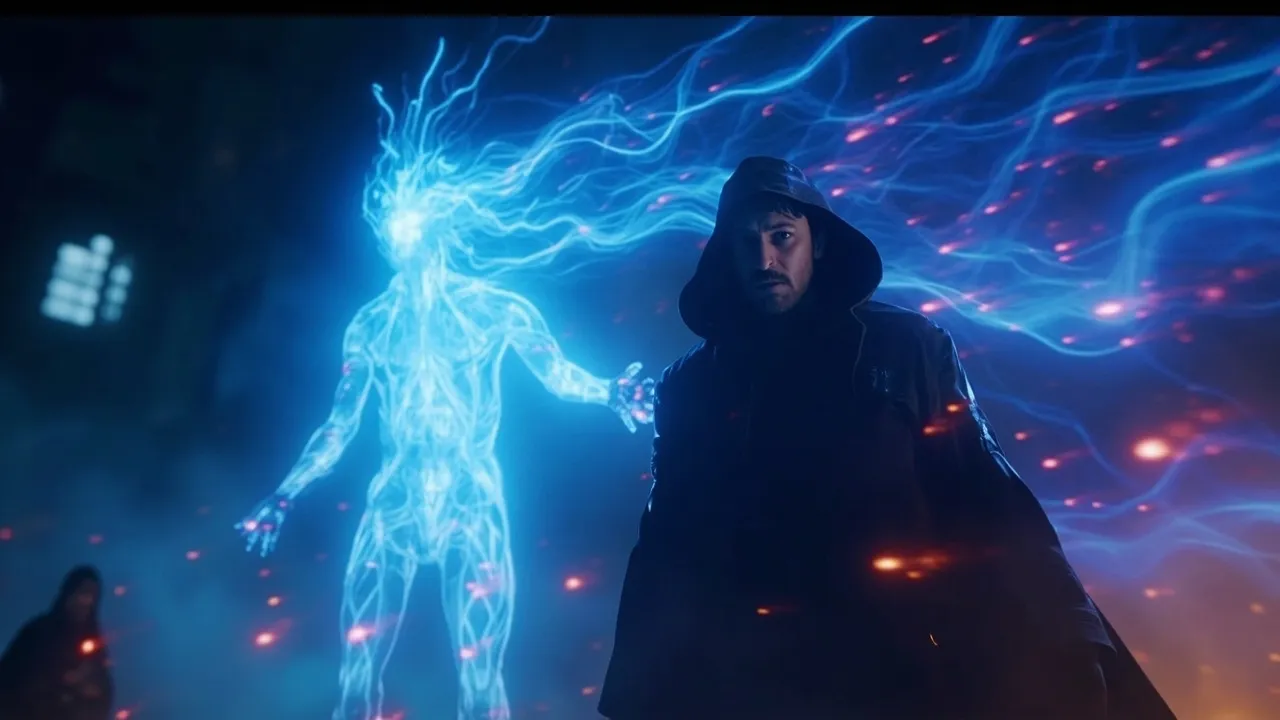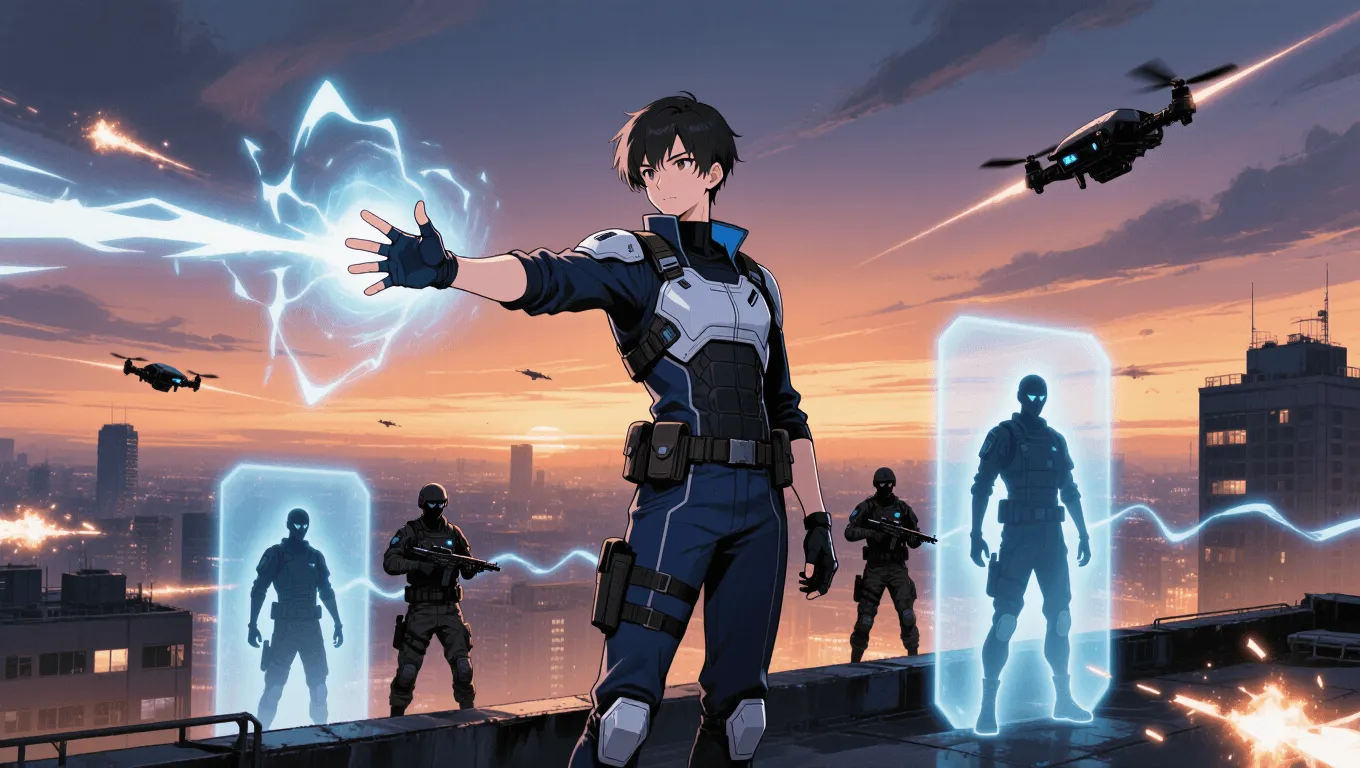Psyche Projection

Psyche Projection Video Demo 🎬
Table of Contents
Psyche Projection is the superpower of sending one’s conscious mind beyond the body to perceive, communicate, and interact across distance. This psychic projection overlaps with astral projection, telepathy, remote viewing, and psionic constructs, making it a versatile ability for reconnaissance, coordination, and precision control without exposing the physical self. In stories and games, a skilled projector scouts hostile zones, stabilizes allies, counters enemy empaths, and even manifests an astral form for direct engagement. For readers exploring related skills, browse the Superpower Wiki and try the random superpower generator to spark ideas.
What Is Psyche Projection
Psyche Projection separates awareness from the body and channels it outward as a directed presence. The psyche travels as an intangible observer at first, then as a focused operant capable of telepathic communication, cognitive influence, and limited interaction with matter through psionic force. Depending on training and anchor techniques, a user might whisper plans into a teammate’s thoughts, map rooms through walls, or form a semi-solid avatar to parry attacks.
This power exists on a spectrum:
-
Pure perception: sensing minds, emotions, and locations with remote clarity.
-
Conversational contact: opening a mind-link for tactical chat, imagery sharing, or data transfer.
-
Assertive impact: imposing suggestions, disrupting enemy focus, or manifesting protective barriers.
-
Avatar manifestation: projecting a durable astral body that duels other psychics and shields allies.
Core abilities of Psyche Projection
Remote perception
The psyche slips past doors and sensors to gather intel. Beginners receive impressionistic “pings,” while advanced users gain full-spectrum clarity—sightlines, emotional thermals, and psionic signatures.
Telepathic communication
Mind-to-mind links enable silent team coordination. A projector can create multi-user channels, send visual maps, and maintain contact despite radio jamming or electromagnetic noise.
Cognitive influence
With consent and restraint, the user boosts courage, steadies panic, or clarifies attention. In darker use, they sow doubt, induce hesitations, or plant directives—actions typically restricted by ethics and law in many settings.
Psionic constructs
Concentrated will shapes barriers, tools, or blades formed from thought-energy. These constructs behave like telekinetic objects but rely on focus rather than muscle.
Memory interface
The projection can reinforce accurate recall after trauma, surface buried details during an investigation, or gently disentangle hypnotic suggestions.
Cross-plane reach
Masters leap to orbiting platforms, distant continents, or neighboring dimensions by tuning to anchor nodes—beacons, sigils, or tech relays that extend range and stability.
Application / Tactical Advantages in Combat
Reconnaissance without exposure
The body stays safe while the psyche scouts corridors, rooftops, and kill zones. This enables trap detection, ambush avoidance, and efficient routing before the first step is taken.
Silent command-and-control
Mind-links replace radios for covert squads. Teams receive synchronized updates, shared visuals, and instant corrections even inside tunnels or shielded structures.
Crowd calming and crisis response
A broad, gentle projection stabilizes civilians during evacuations. The projector dampens panic, identifies agitators, and counters hostile hypnotic triggers.
Precision disruption of enemy focus
Injecting a fleeting image, amplifying doubt, or tugging attention at the right instant can derail an attack pattern. Brief lapses become decisive openings for allies.
Counter-psionic defense
Projected wards repel intrusions and eject hostile thought-forms. In a psychic duel, the avatar intercepts assaults while allies reposition in the physical space.
Guided rescue and extraction
Once a captive is located, the projector feeds lock codes, patrol timings, and route overlays directly into rescuers’ minds. If the prisoner is under mind control, the projector stabilizes their cognition long enough for a clean extraction.
Level: Level 1 🏙️, Level 2 🌇, Level 3 🌃
Level 1 🏙️ — Initiate Projector

-
Range: room to small building.
-
Capabilities: remote sensing, one-to-one telepathic whisper, mild emotional modulation (calm/alert), brief phasing through light barriers.
-
Combat role: spotter and relay. Identifies angles, hazards, and weak points while feeding quiet updates to a single ally.
-
Typical training: breathing anchors, basic shielding, and snap-back protocols to return safely after a jolt.
-
Common setbacks: headaches, dizziness, memory fog after overreach.
Level 2 🌇 — Field Operative

-
Range: neighborhood to city sector.
-
Capabilities: stable multi-user mind-link, sharper influence (clarify/confuse), short-lived psionic shields, limited astral form for blocking or nudging, interference against simple drones.
-
Combat role: tactical coordinator and soft controller. Maintains formation integrity, breaks enemy cohesion, and protects against shrapnel arcs with thought-plates.
-
Typical training: layered anchors, counter-illusion drills, ethical rules of engagement.
-
Common setbacks: drain from multitasking; susceptibility to psychic dampeners and null nodes.
Level 3 🌃 — Master Projector

-
Range: continental or interplanar with anchor networks.
-
Capabilities: battle-ready astral avatar; multi-squad command net; deep memory repair; precision compulsion where lawful and consensual; hardened counter-psionics; phased transit through reinforced materials.
-
Combat role: strategist and frontline psionic duelist. Locks down enemy empaths, scrubs mass-fear effects, and shields units from panic cascades.
-
Typical training: resonance mapping, signature masking, and interplane navigation with safe return routes.
-
Common setbacks: feedback storms during master-level duels; collateral emotional echoes; high risk if the physical anchor is compromised.
Limitations of using the Psyche Projection
Anchor dependency
The user’s body remains stationary—meditating, asleep, or braced. If discovered, it becomes a prime target. Robust anchor security is as critical as battlefield skill.
Focus and stamina costs
Running a mind-net, holding shields, and shaping constructs at once burns cognitive reserves. Fatigue shows up as slowed reactions, blurry perception, and unstable avatars.
Range and fidelity constraints
Psionic weather, anti-psionic tech, and dense EM fields distort clarity. Without relay beacons, long-range or cross-plane jumps risk misalignment or partial desync.
Legal and ethical boundaries
Non-consensual entry, memory tampering, or compulsion may be illegal. Teams often adopt strict protocols: advisory influence only, documented consent for deeper work, and medical supervision for clinical interventions.
Susceptibility to nullification
White-noise lattices, null fields, and thought-scramblers can block entry, sever links, or collapse constructs mid-fight, isolating the squad at critical moments.
Weakness against what other superpowers
Mental shields and psionic immunity
Disciplined minds, specialized training, or engineered immunity can brick-wall perception and influence. Forcing through these defenses is costly and risky.
Technopathy and anti-psionic engineering
Technopaths trace a psyche’s signature through sensor webs, triangulating the user’s physical location. Anti-psionic grids hard-jam links and scatter avatars.
Illusion mastery and sensory spoofing
High-tier illusionists feed convincing false inputs, turning reconnaissance into misdirection. A projector who relies on a single sense can be led into traps.
Probability manipulation
Chaos-leaning abilities nudge outcomes so suggestions misfire and constructs flicker, undermining delicate, timing-based interventions.
Void energy and anti-energy zones
Regions tuned to void or anti-psychic energy provide no “grip” for thought-forms. Avatars collapse instantly, and mind-links drop to static.
Synergistic Power Combos
Telepathy + Psyche Projection
Telepaths add bandwidth, encryption, and filter control. The projector scouts and shields; the telepath refines signals, suppresses noise, and maintains clean channels under stress.
Telekinesis + Psionic constructs
A telekinetic reinforces thought-plates and moves them dynamically, creating mobile bunkers or kinetic lenses that redirect fire and debris.
Empathy + Field triage
An empath steadies pain and panic while the projector restores memory coherence and breaks compulsion cycles. Together they prevent psychological spiral during extractions.
Illusion control (allied) + Anchor camouflage
Allied illusionists hide the physical body and spoof scans, while the projector extends range through safe relays. The combination frustrates trackers and counter-psionic teams.
Technopathy + Relay beacons
A technopath deploys encrypted relay nodes and biometric locks. If the projection meets interference, the technopath shifts frequencies or hands off to a secondary anchor seamlessly.
Local time dilation
A time specialist slows time around the anchor, granting the projector extended subjective windows to resolve complex psychic duels or multi-squad coordination.
Known Users
-
Jean Grey (X-Men): An Omega-level psychic renowned for astral work and battlefield coordination. Learn more about Jean Grey.
-
Psylocke: Often manifests psionic blades and engages in high-speed psychic dueling alongside physical combat.
-
Martian Manhunter: Combines vast telepathy, mind-link strategy, and long-range consciousness travel for elite reconnaissance.
-
Doctor Strange: Though magical in origin, frequently demonstrates advanced astral separation and interplane navigation that mirror high-tier projection.
-
Emma Frost: A precision telepath who excels at team coordination, defensive shielding, and surgical influence under strict protocols.
For more abilities and team-building ideas, explore the full Superpower Wiki and roll the random superpower generator to discover unexpected combinations.
